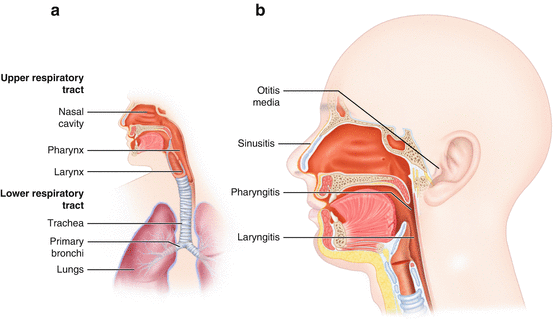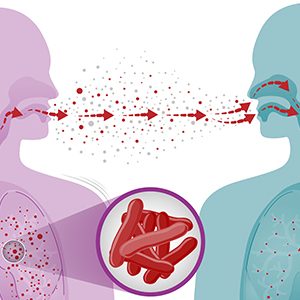
Upper respiratory tract infections (URIs) are amongst the most common infections in the adults and children. Although the respiratory infections can happen any time they are more common in winter.
The cause of the upper respiratory infections are normally viral infections, however bacterial infections may also lead to URI. The patients mainly present with cough, symptoms of sneezing, nasal congestion and flue like syndrome. The patient may also complain of a sore throat and difficulty in swallowing
The mucous membrane lining the respiratory tract is directly attacked by the viruses or bacteria. The nasal hair act as a physical barrier and trap the invading organisms. The wet mucus also traps the viruses and the bacteria and the cilia, tiny hair like structures that line the trachea also push the foreign organisms or particles outwards towards the pharynx where they are swallowed
Despite these physical, chemical and immunological barriers the bacteria and viruses can still evade these protective mechanisms and cause infection and inflammation of the mucosal lining. The common infective organisms are Thinoviruses, Group A streptococci, Influenza and parainfluenza viruses, Respiratory Syncytial virus (RSV) Whooping Cough, Diphtheria and Epstein (EBV).
The upper respiratory infections are normally self-limiting, however sometimes they are not resolved and this is when medical intervention is required.
When the symptoms last more than few weeks, keep getting worse and cause chest pain and breathlessness one has to investigate.
For suspected streptococcus infection a rapid streptococcal test is done along with bacterial throat swab cultures. Throat swab cultures may also be taken to rule out other bacterial infections. Sometimes it is difficult to diagnose viral infections and hence a PCR test is advised for the same. Recently multiplex PCR is advised which can test for many organisms at the same time. Some examples of multiple PCR are-
Respiratory Panel
- Influenza A virus
- Influenza B virus
- Respiratory Syncytial virus A
- Respiratory Syncytial virus B
- Flu A-H1
- Flu A-H1N1 pdm09
- Flu A-H3



